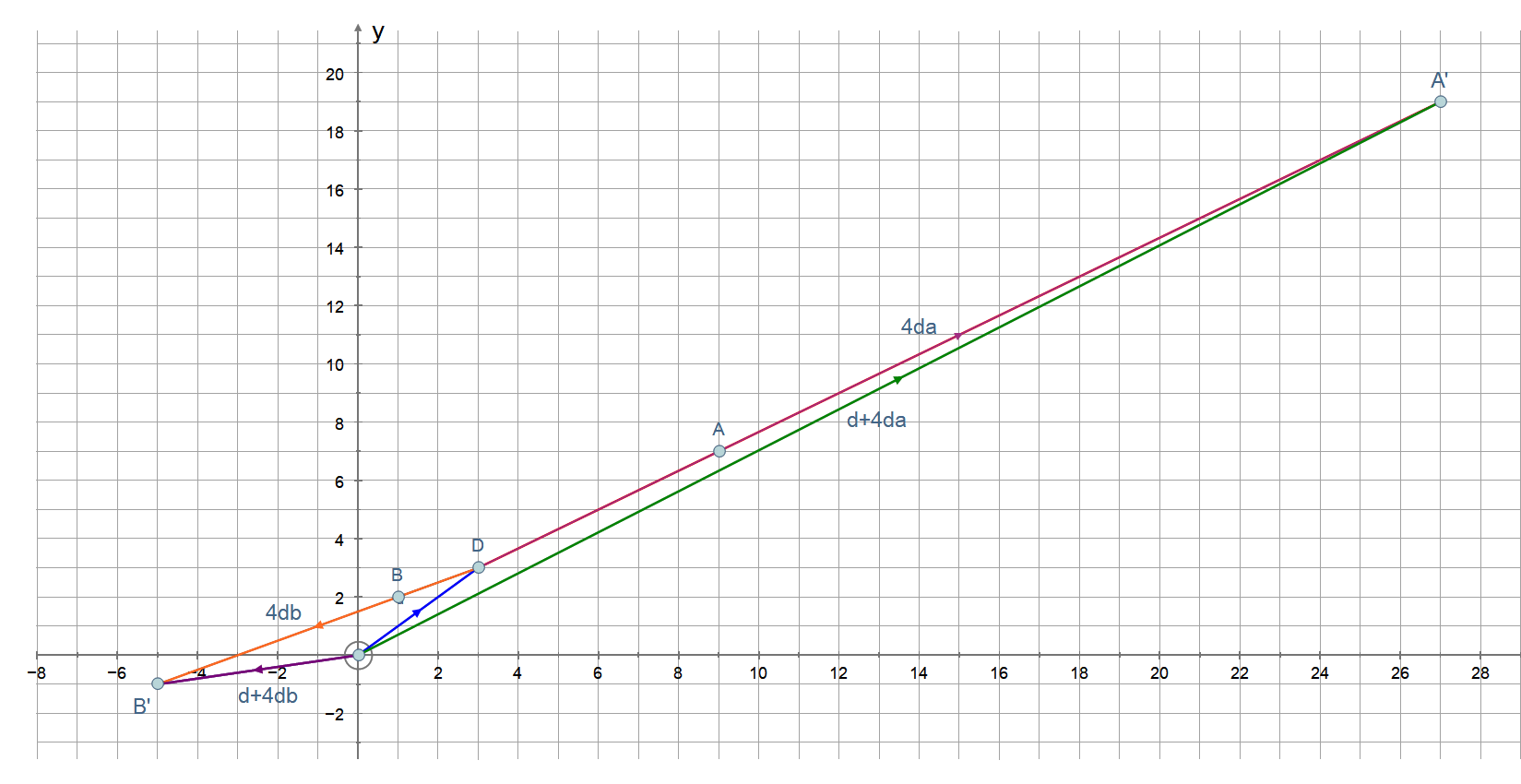A line segment has endpoints at #(9 ,7 )# and #(1 ,2 )#. The line segment is dilated by a factor of #4 # around #(3 ,3 )#. What are the new endpoints and length of the line segment?
1 Answer
May 17, 2018
Explanation:
One method to perform these is by using vectors.
Let:
Dilations by a factor 4:
Position vector of the image of
We now just add:
We do the same for point b:
Position vector of the image of
So new endpoints are:
PLOT:


